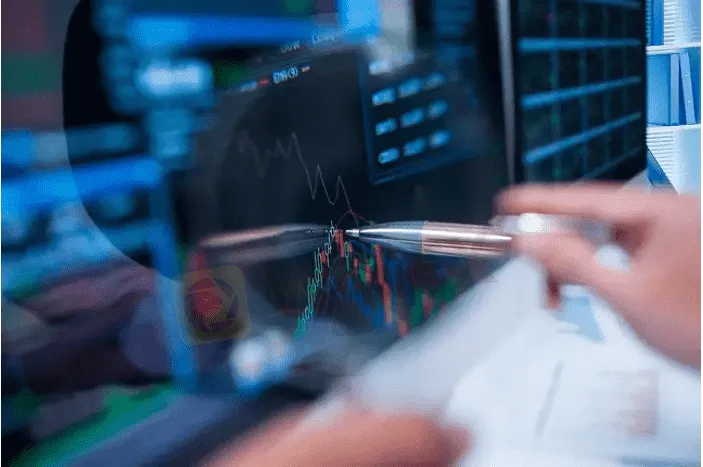Abstract:Many of these suggestions can be implemented easily and quickly. But the true obstacle to implementing these ideas will be your own inner biases.

As a trader, your number one job is that of a risk manager. You must control and minimize risk at all times. This should be your primary objective. If the risk can be managed, traders can open themselves up to making profits in the market. Everything else is secondary to that.
This concept is difficult for some traders to really get a hold of, but it is an essential ingredient for success in the market. It should be noted that risk management is not a technique to avoid losses. There is no system in the world that doesnt have losses. Our concept of risk management aims to keep the losses small relative to the wins. Most successful traders believe in the concept of small losses since a large loss is unforgiving and often unrecoverable.
In this article, I will discuss five ways to control risk when trading Forex:
Trade With a Hard Stop Loss, Avoid Mental Stops
Leverage is Your Friend Unless its Excessive
Volatility is Necessary for Success, but Needs to Be Controllable
Determine a Comfortable Fixed Percentage of Your Account to Risk
Trading from the Top Down Starts with Higher Time Frames
Trade With a Hard Stop Loss, Avoid Mental Stops
One of the best ways for traders to contain risk exposure in the markets is by placing a hard stop loss with every trade. Dont just have a stop loss in mind, but actually place the order that could prevent a small loss from becoming a long-term losing position.
A hard stop loss is active in the market and will be executed upon when prices reach that level. It is automatic and doesnt require the trader to do anything more once it has been placed. Proper placement of the stop-loss is the key and is usually determined by analysis that determines when you will be wrong on the trade.
A mental stop loss is typically defined as a level at which a trader has decided to exit the trade, but has not initiated a stop loss order in the market. This type of stop loss order is emotional. The hard stop loss order is not, it is usually based on some kind of study of the market or trading system approach.
The main issue with a mental stop is that it is open-ended and leaves too much wiggle room for the trader. Often, when a mental stop is reached, a trader will justify staying in the trade even when they know it is not in their self-interest to do so. A hard stop forces you to get out of the trade, and removes some of the psychological barriers associated with taking a loss.
Leverage is Your Friend Unless its Excessive
When it comes to trading the FX markets there is no guarantee that you will make money. However, I can almost guarantee you that if you do not use leverage responsibly, then you will blow up your account at some point in your trading career. This is not at all to scare you, but rather to prepare you so that you learn to have a healthy respect for leverage.
Implementing a high leverage approach can make the trader a lot of money in a short period of time…if they are right on the trade, but it can also create a loss big enough to wipe out your trading capital.
What is the benefit from making a huge profit on a highly leveraged trade, only to give back all of the profits or more following a large loss?
Volatility is Necessary for Success but Needs to Be Controllable
This is a rule for controlling risk that some novice traders tend to get confused about. Firstly, some volatility is good because it allows the trader to capitalize on reasonable price swings. Put it this way, if a market didnt move then no one would trade it. Trading in a market with little volatility can lead to losses too. Not only from the market but from high transaction costs.
Sometimes you can‘t avoid a volatile condition like when surprise news is announced but that’s why we use hard stop losses. Knowingly jumping into a market in front of an economic report is the type of volatile trading style you want to avoid. Dont read a headline and think you can predict the direction of a market. Let the market conditions dictate when it is best to enter a trade following a volatile reaction to news or a report.
A few examples would include the US Non-Farm Payrolls report that comes out the first Friday of every month. And another example would be a Central Bank rate statement.
Both of these types of news announcements tend to be highly anticipated by the market and can result in major up and down spikes after the announcement.
Both of these types of events have been known to produce two-sided or whip-saw like trading. The Non-Farm Payrolls report, for example, can have a bullish payrolls number and a bearish unemployment rate. A central bank could decide to leave its benchmark interest rate unchanged then issue a hawkish or dovish policy statement.
If you get caught on the wrong side of a report or central bank announcement, you could end up buying and selling to yourself.
Determine a Comfortable Fixed Percentage of Your Account to Risk
Controlling the amount of money at risk per trade is a personal preference that goes hand-in-hand with placing a stop-loss order. I don‘t advocate a hard 1% or 2% rule. I think a trader has to look at the size of his trading capital then figure out many dollars he is comfortable risking then calculate its percentage of the trading account. You’ll often find that it‘s a lot lower than 2% and maybe even lower than 1%. After that, trading mathematics takes over and you either have enough to handle a few small losses or you don’t.
As I mentioned earlier, avoiding the big loss when trading is the key to success. Not avoiding losses altogether. When you trade a fixed percentage you are actually lowering the dollar amount of the risk per trade after a loss and increasing the dollar amounts if you are winning. This is important if your trading system or you are a streaky trader.
Like I said before, once you determine the percentage you want to risk, the rest is mathematics. The idea behind risking less money when you loss or are in a losing streak is to prevent the account from blowing up before you hit a winning streak. Then if you are on a winning streak, you are risking more money because you want to compound your profits.
By adhering to it, you will be relatively safe from blowing up your account from a black swan event or just a normal string of losing trades. Many times, new traders neglect the highly adverse effect of a large drawdown on recovery. For example, a 20% drawdown requires a 25% return to recover to break even. A 30% drawdown requires a 42% return to recover to break even. And a 50% drawdown requires a whopping 100% return to recover to break even.
Trading from the Top Down Starts with Higher Time Frames
One type of risk that many traders do not discuss often enough, is the risk associated with overtrading. Oftentimes, traders will focus on scalping or short-term day trading strategies, because they have a misguided belief that the more often they trade, the more money they can make in the markets. This is not only untrue, but it can be dangerous to your bottom line.
By sticking to larger timeframes, you will benefit and reduce risk in several ways. Firstly, it will help contain your impulse to overtrade on a smaller time scale, and instead, you will focus on a higher time frame. Secondly and as importantly, sticking with higher timeframes will help you minimize your transaction costs. Transaction costs in the form of bid-ask spreads and commissions can take a heavy toll on your profitability.
Once again, mathematics or invisible trading laws come into play. The general rule is: You will lose at the rate of the house advantage plus transaction costs. So unless you have extremely low transaction costs and the ability to buy the bid and sell the offer, you will run out of money faster if you choose to trade the smaller timeframes.
Conclusion
In this article, we discussed five ways that you can start controlling risk when trading forex. Many of these suggestions can be implemented quite easily and quickly. But the true obstacle to implementing these ideas will be your own inner biases.
It is often said that trading is 10% mechanical and 90% mental. Thats pretty close to the percentages that control a professional golfer. The mechanics of placing a hard stop-loss order are pretty simple – like pushing a button. But you have to have the mental strength to actually do it.
Any professional forex trader that has been around the markets for a while will tell you that risk control is paramount to long-term viability and success in the markets. It is your job as a trader to take the necessary steps to ensure your survival. Remember, it‘s not the return ON your capital that is the most important thing. It’s the return OF your capital that is the most important.














